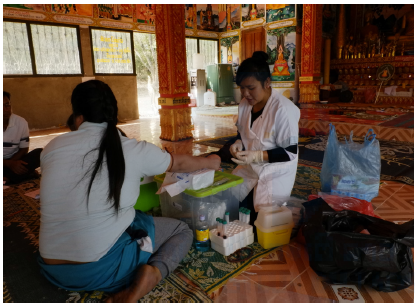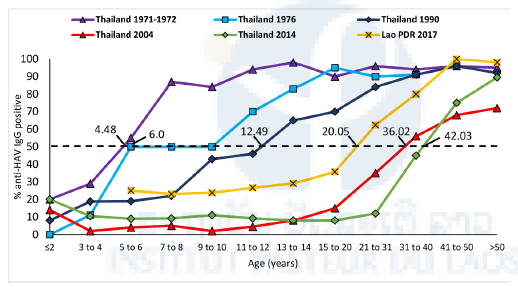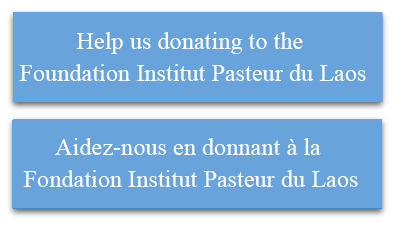Hepatitis A virus in Lao People’s Democratic Republic
 Project coordinators: Antony Black
Project coordinators: Antony Black
Staff member: Vilaysone Khounvisith
Background
Hepatitis A virus is a global public health problem, with approximately 1.5 million clinical cases of hepatitis A estimated worldwide annually. The incidence of infection has a strong relation with sanitary and environmental conditions and the level of socioeconomic development. Hepatitis A has a particularly high rate of endemicity in underdeveloped countries with poor sanitation, as it is often passed through the fecal-oral route from contaminated food or water. In Lao PDR, little is known about the disease. Several outbreaks of the disease have been reported, such as a major one that occurred in 2016 in Xiengkhuang Province (North of Lao PDR). Therefore, we investigated the age-stratified HAV seroprevalence in Xiengkhouang province and Vientiane Capital in Lao PDR. We also determined risk-factors for HAV infection.
Results
1195 participants were included, 400 from Xiengkhoung province and 795 from Vientiane Capital. Overall 62% of participants were anti-HAV positive in Xiengkhouang province compared to 45.5% in Vientiane Capital. In Xiengkhouang, 23.7% of 5 to 10 years olds were already seropositive compared to 5% in Vientiane. A dramatic increase in seroprevalence occurred between the 15 to 20 and the 21 to 30-year-old age groups (35.7% to 62.4%, Xiengkhouang and 11.5 to 69.7%, Vientiane) until essentially all older adults were positive in both locations. The main risk factors for HAV-antibodies were age, non Lao-Tai ethnicity and food-related.
This study showed a significant exposure to HAV in Lao PDR. The majority of the adult population has been exposed, probably during their early lives before general sanitation had improved. Currently, some exposure still begins early, particularly in rural areas with lesser sanitation, whilst progress has been made in Vientiane Capital.
As expected, the rate of past infections increased steadily with age. In the participants above 30 years of age, more than 80% had previous HAV infection in both the rural setting of Xiengkhouang and the urban setting of Vientiane Capital. In the capital, there was a conspicuous difference between cohorts born before and after 1996. This may reflect infections of these individuals during childhood and an improvement in sanitation in the late 1990s. Similarly, in neighboring Thailand, improved sanitation resulted in a reduction in childhood infections and therefore a shift in the age distribution of anti- HAV positive individuals. The age at which 50% of the population are anti-HAV positive in Xiengkhouang is about 20 years.
Policy and impact
Awareness campaigns regarding the risk of HAV infection should be conducted e.g. in schools and villages. Furthermore, improvements in water sanitation, in particular in the rural districts, and better food hygiene are warranted. Our study also suggests that HAV infections are under-reported. Improved reporting would provide guidance for targeted interventions to further reduce HAV infections. These data have been formulated as a policy brief and a manuscript for submission to an international journal.

Figure 1. Age-stratified anti-HAV IgG seroprevalence data from Xiengkhouang, Lao PDR in 2017 compared to Thailand from 1971/1972 to 2014. Dotted line corresponds to the age of 50% seropositivity. Adapted from Sa-Nguanmoo et al. 2016.






